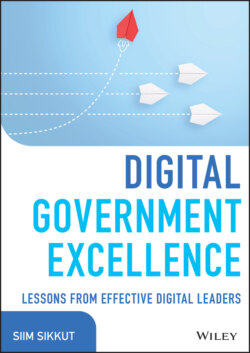Читать книгу Digital Government Excellence - Siim Sikkut - Страница 52
You Spoke about the Need to Work Very Openly and Transparently—How Did You Do That Really?
ОглавлениеWe had had the Phoenix conundrum that put the spotlight on government tech in a way that it had never had. However, this was not good media coverage; the media was all over how that system was mishandled.
Our strategy was that media was not going to be our friends, and if we do not talk on social media about the good things that the civil service is doing, nobody will. So, we needed to get out there on newer platforms and start talking about our own messages.
I encouraged every single employee in the CIO Office to talk about the projects that they were working on. Not because I wanted media attention, but because I wanted real-time collaboration with other sectors. Often in government, we see policy consultation with a beginning date and an end date. This way you are just limiting collaboration opportunities by not engaging continuously. With LinkedIn, Twitter, or other social media platforms, we could collaborate 24/7 now. The government way of doing business had not changed so far with the tools we had at our disposal.
Our way of being open by default meant saying continuously, “Hey, this is what I am working on.” I wanted the vendors to know, I wanted the provinces and regional governments to know, I wanted other departments to know. People just had to start talking about the work they were doing. It was great, even if it is a double-edged sword because it adds more attention to your work.
It also meant that we had to start talking about the failures better because some of these projects did not work well. Government does not like to talk about failure, right? Like I keep joking, fail is four-letter word that starts with the letter f and that you are not allowed to utter in government. We had to make it known that failing fast and small is better than failing slow and massive, like Phoenix.
